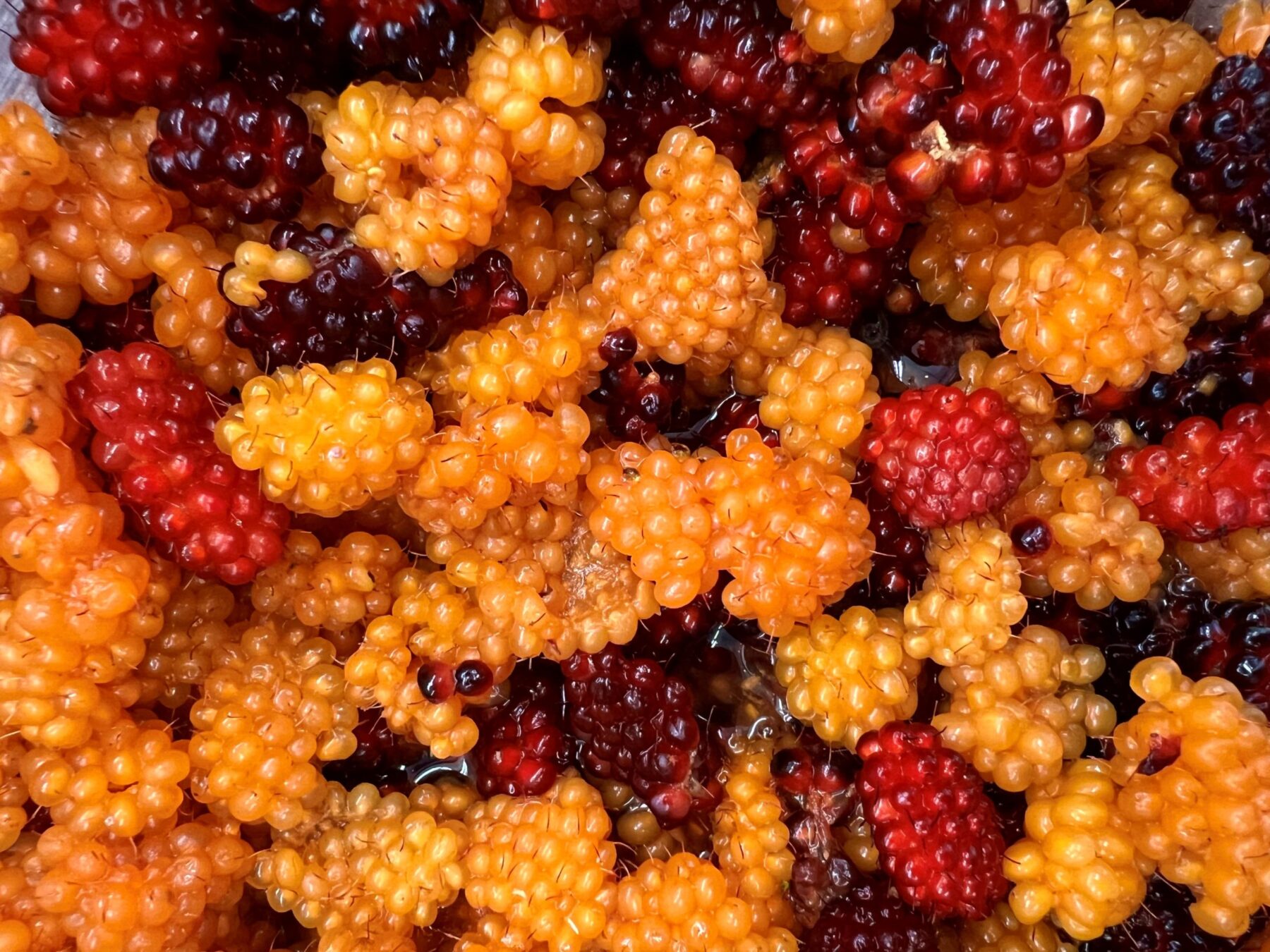
News, Research, Featured
News, Research, Featured
News, Research, Featured
Berries through the Lens of a Refractometer
Last week I had the opportunity to join Ella Neumann, data manager, and Gale McCrary, research intern, to help with the berry project for the afternoon. We visited four different sites where equipment is set up to monitor salmonberry bushes in order to collect new data on the berries’ ripening progress!
The first order of business at each site was to locate the cameras and sensors— not always an easy task, and especially not in the rain and fog. Everything is located away from regularly traveled trails to avoid disturbances, which means we had to trek through all manner of vegetation to access the equipment. Once we got there, it was just a matter of exchanging the memory cards, and then came the fun part: taking a test photo to make sure everything is operating properly, which is a great opportunity to leave a goofy photo for whoever ends up looking through all of the pictures, of course.
After that was taken care of, it was time to collect berries. We needed ten berries from every site to measure for sugar content, and finding them was harder than expected at the mountain locations. Maybe it was because of the higher altitude, but ripe berries were few and far between.
Once all ten were finally secured, we had to crush them one by one with a mortar and pestle to separate enough juice to draw up into a dropper. Then the juice had to be dripped carefully onto the lens of a refractometer, a device that can determine the density of sugar in a sample of liquid by measuring the amount of light that passes through it. We measured the juice from each fruit twice, which means we repeated that process twenty times per site.
This process for collecting data is repeated every so often at each site the Science Center has equipment at as part of its berry project. The berry project currently monitors salmonberry plants and gathers data on their phenology, a topic that’s relatively overlooked by research in Southeast Alaska despite the plants’ importance to culture and way of life in the region. The berry project aims to cultivate a better understanding of salmonberries’ stages of growth and how climate change may affect them, bringing information to the Sitkan public on a subject that is near and dear to many locals’ hearts.
